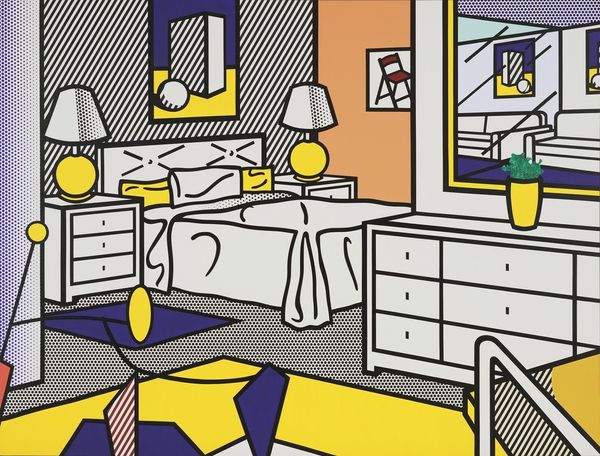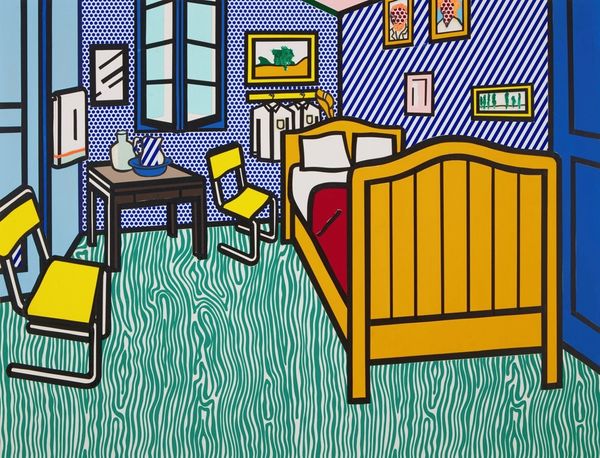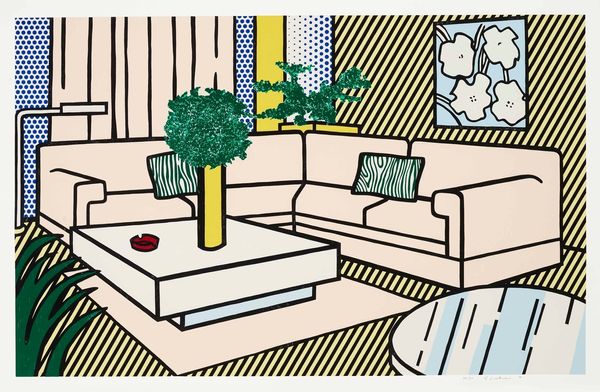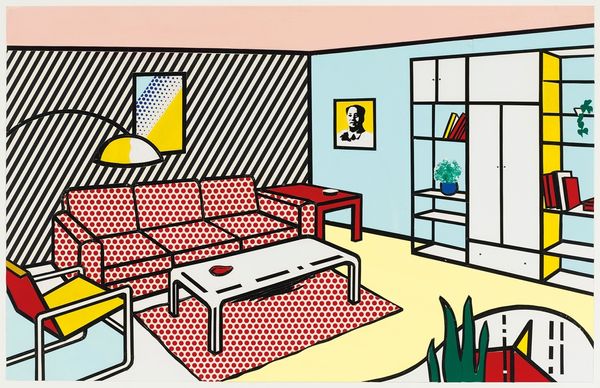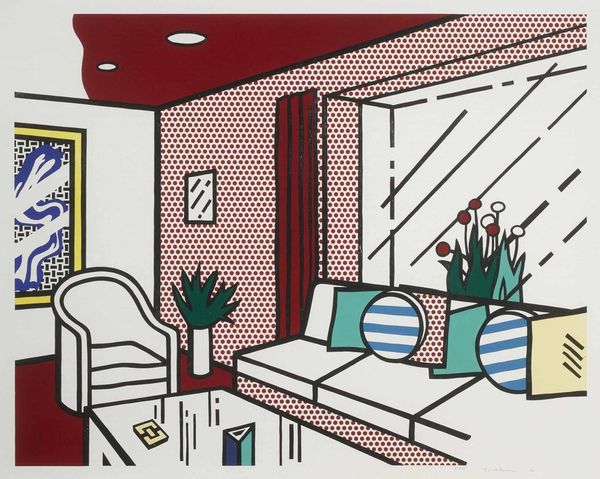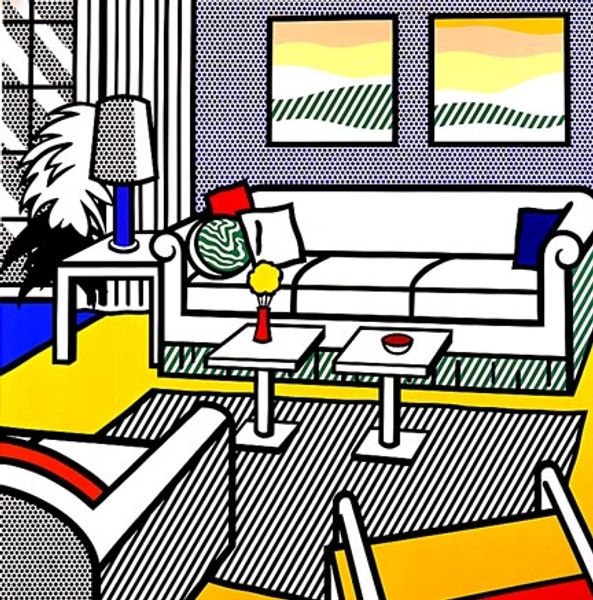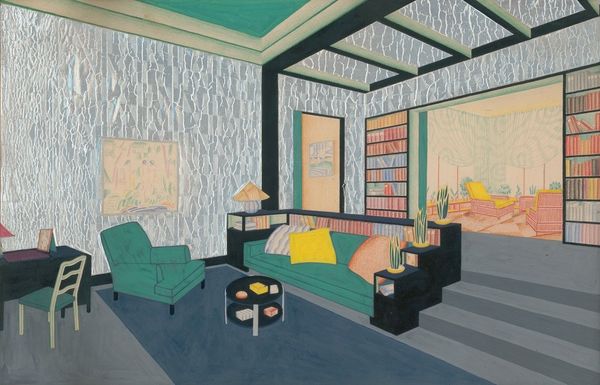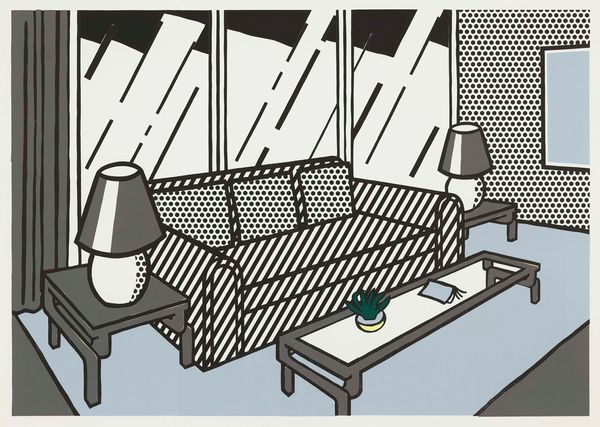
Copyright: Modern Artists: Artvee
Editor: Roy Lichtenstein's "Wallpaper with Blue Floor Interior," from 1992. The comic-style portrayal of what seems to be a rather upscale living room, complete with modern furniture, creates this almost satirical feel for me. What social commentary, if any, do you think Lichtenstein is offering us here? Curator: It’s a fascinating question! Lichtenstein, a key figure in Pop Art, made a career appropriating and elevating everyday imagery, particularly from comic books and advertising, to challenge the art world’s hierarchy. How do you see the wallpaper performing that function here? Editor: Well, by mimicking a commercially printed style to portray a well-off interior design, Lichtenstein may be suggesting the pervasiveness of commodification, how even our domestic spaces are saturated with mass-produced aesthetics? Curator: Precisely. The Ben-Day dots, the bold outlines—these are hallmarks of mass production. The choice of "interior," usually a space of personal expression, further underscores the intrusion of mass culture into our lives. What effect does the mirror have? Editor: It complicates things. It offers an illusion of depth while still maintaining the flat, graphic quality typical of his pop style, reinforcing the theme of superficiality in modern life. I am also now reminded that the economic boom of the 90's, in parallel with media evolution, might have fueled his commentary. Curator: It's a complex layering. Think about museums too – places where art becomes commodified and displayed. This piece becomes part of that very system it critiques. The "Wallpaper," which flattens reality into a stylized image, makes us question what’s real versus representation, both inside the depicted space and in the world outside the museum. Editor: That is very insightful. So it isn't just a simple critique, but a self-aware piece embedded within the very system it analyzes. I now look at it as being a mirror reflecting us. Curator: I’m glad you said that, because ultimately art asks questions and encourages self reflection in order to give life and direction to our future!
Comments
No comments
Be the first to comment and join the conversation on the ultimate creative platform.
